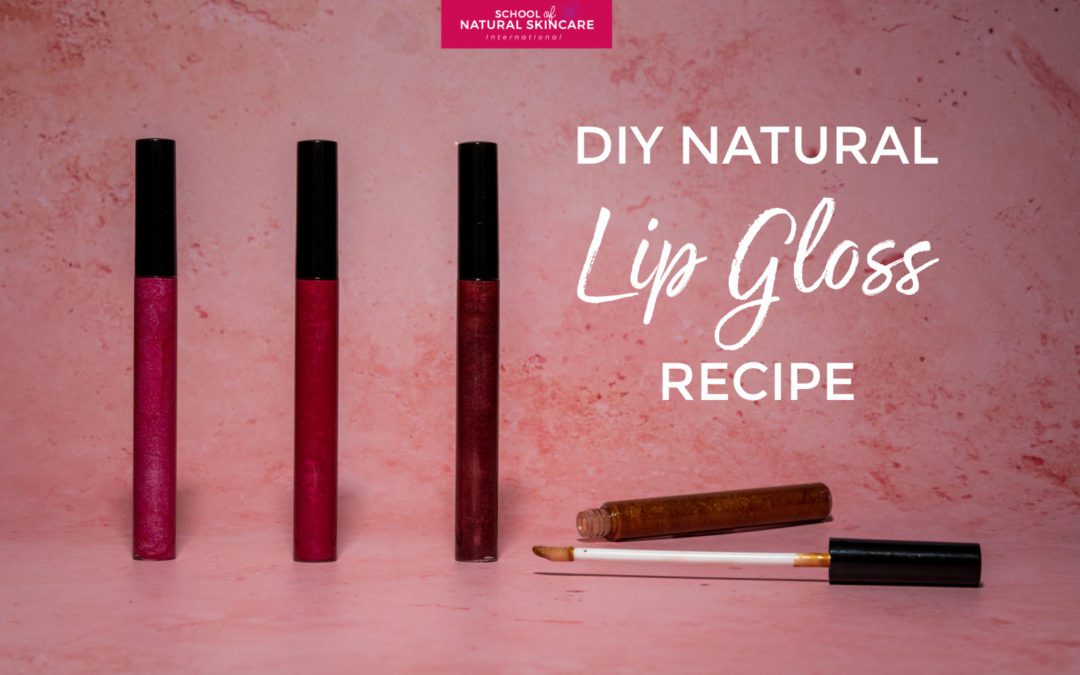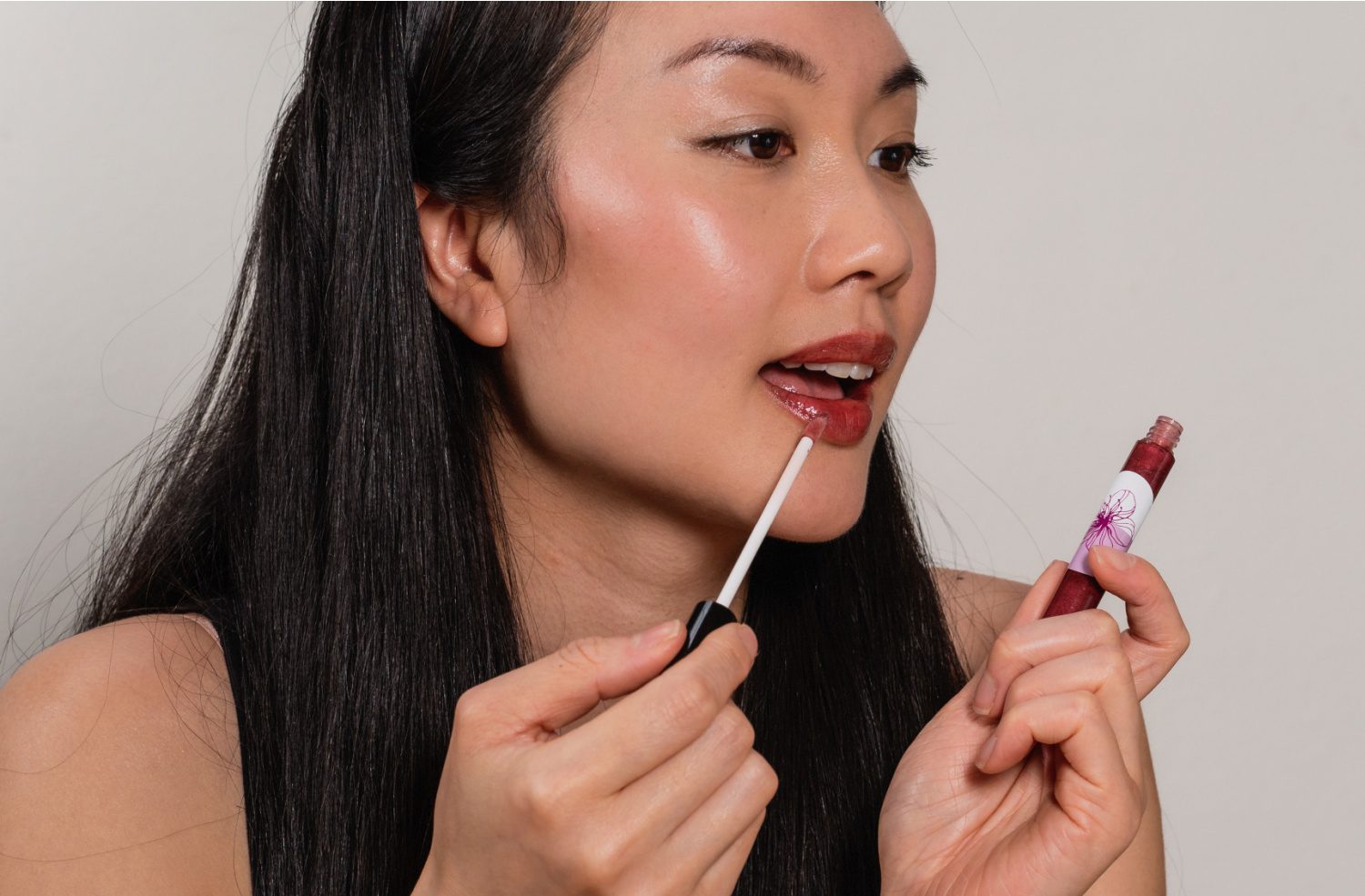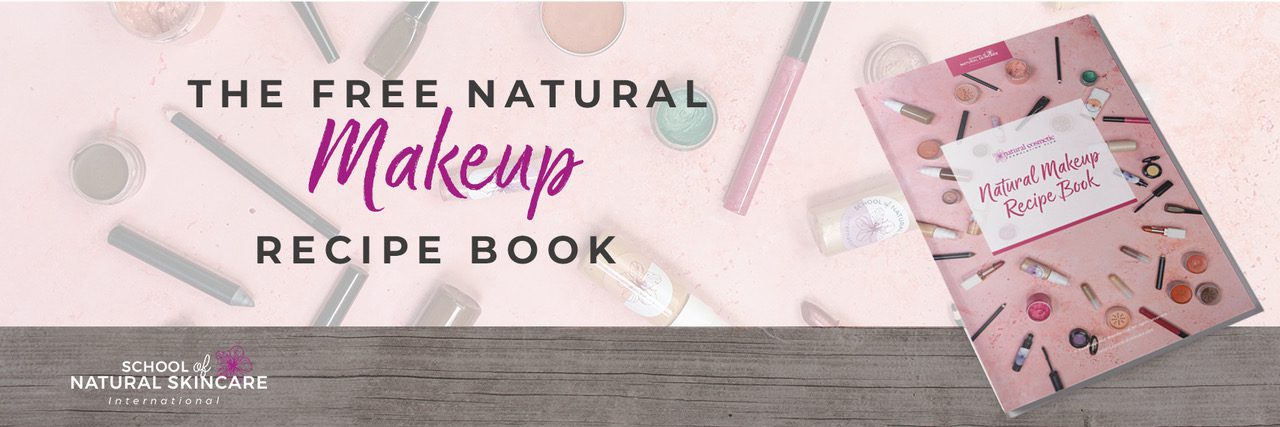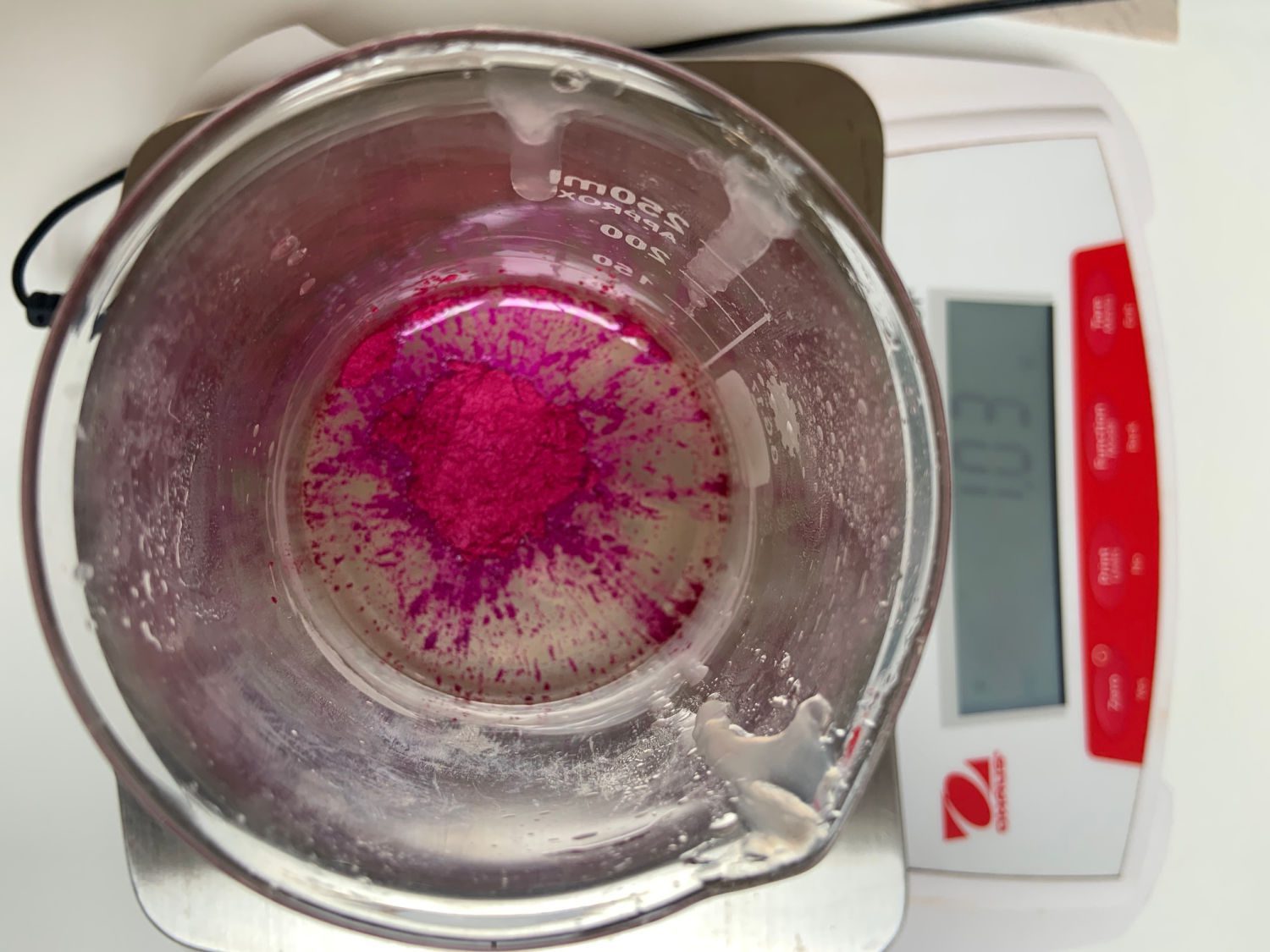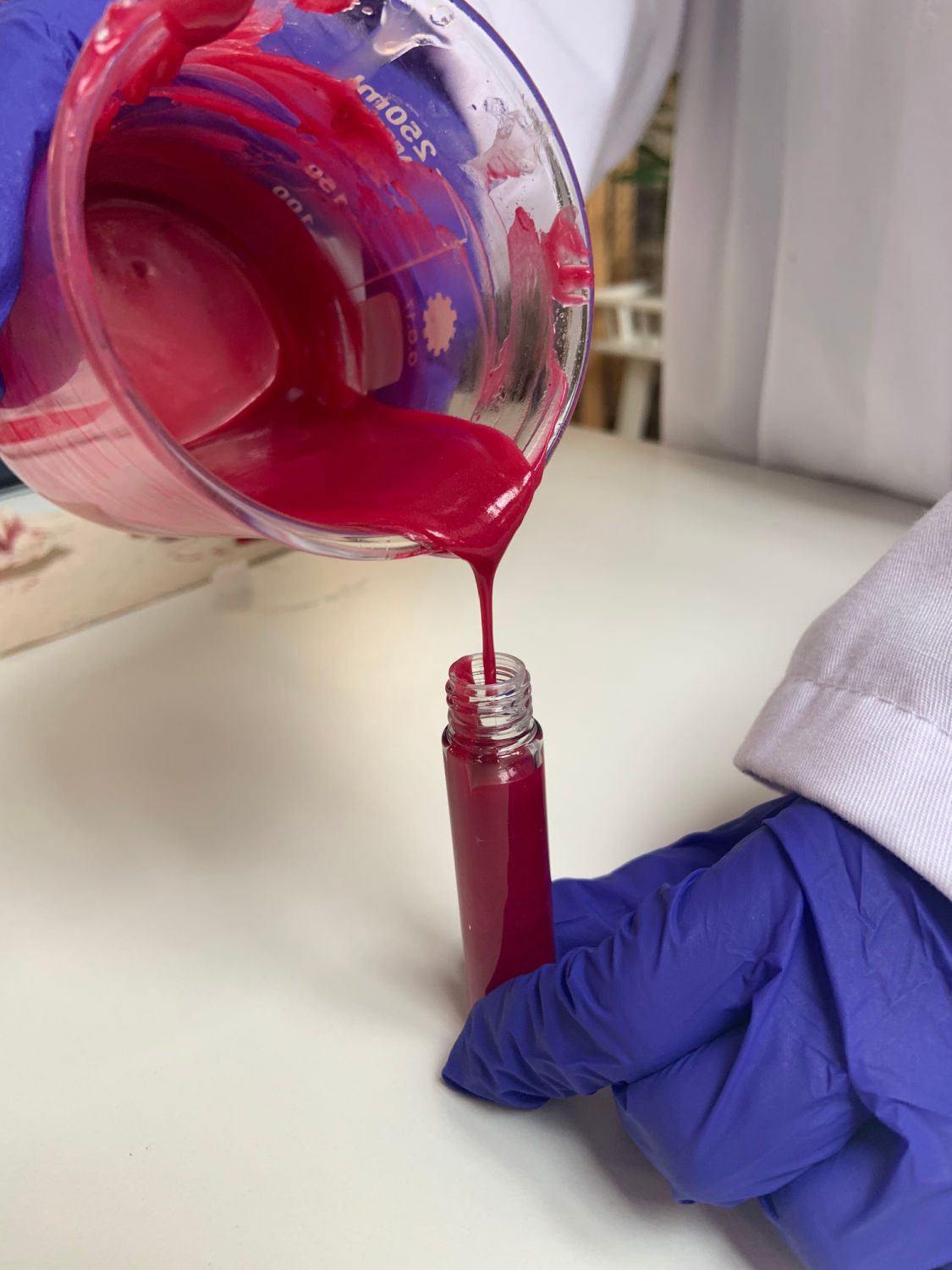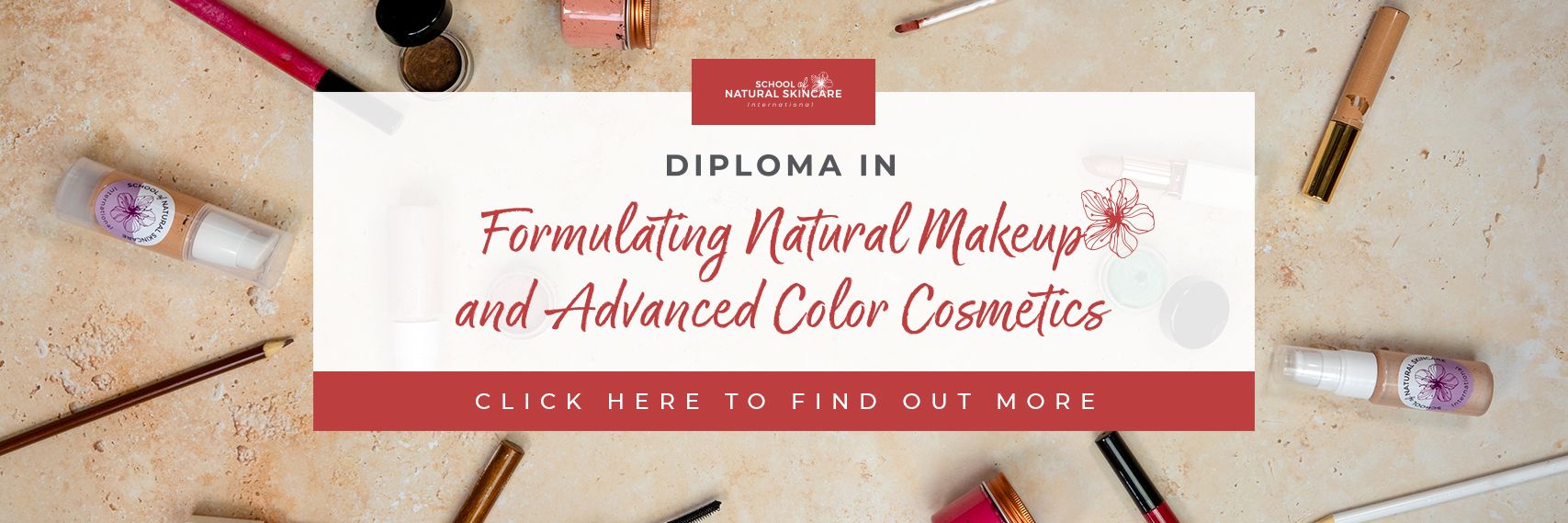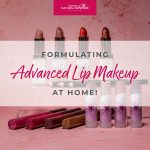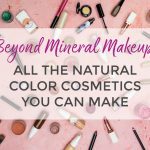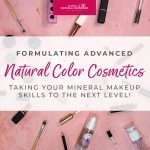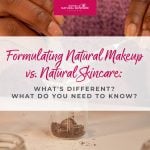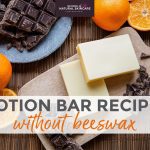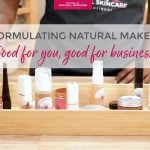Lip glosses are super fun products to make, and this beginners DIY lip gloss recipe is a great way to get started with making your own natural makeup products.
Try out our free formula and then join us on our Diploma in Formulating Natural Makeup and Advanced Color Cosmetics for professional guidance on creating a complete range of color cosmetics!
What are lip glosses?
Lip gloss products add high-shine gloss to the lips. They can be transparent (without added colorants) or colored with mineral pigments and/or micas. The degree of pigmentation in lip glosses is usually lower than in lipsticks, as their primary function is the creation of a wet-look, glossy effect.
In terms of product type, lip glosses are usually anhydrous (waterless) oil-based gels with added glycerin.
Lip gloss is usually packaged into a tall and narrow lip gloss container with a wand applicator. Smaller squeeze tubes can also be used as lip gloss containers.
How to formulate a natural lip gloss
To formulate a lip gloss, we need to thicken oils into an oil-based gel, using lipid (oil) thickeners.
There are two types of lipid thickener that can be used:
- Waxes or modified waxes, for example beeswax or cera bellina (a modified beeswax).
- Special oil-gelling ingredients, for example Sucragel and Sapogel Q. These ingredients create an oil-based gel from liquid oils.
Both types of lip gloss are covered in our Diploma in Formulating Natural Makeup and Advanced Color Cosmetics.
In this article, we’ll share an example of the first kind, which is easier for beginners to make. Once you have mastered this you can move on to the more advanced type of lip gloss.
The key ingredients in DIY natural lip gloss
Castor oil is an essential ingredient in lip gloss because it creates a very shiny and glossy finish, plus its fatty acid composition allows for an addition of a small percentage of glycerin.
Glycerin is often added to lip gloss formulas, as it enhances the glossy effect and increases the longevity of the lip gloss once applied. Even though glycerin is water soluble, and as such not miscible with oils, it can be successfully mixed with the oils if they contain a large enough percentage of castor oil and are properly thickened with waxes or oil-gelling ingredients.
Pigments and/or micas are used to add color to the lip gloss. The amount of pigment added to lip gloss can be varied according to the desired color strength.
Lipid thickener to thicken the oils into a gel-type consistency.
Preservatives and antioxidants to project the product from contamination and extend its shelf-life.
Lip gloss: Product development questions
Product type:
Medium pigmented lip gloss.
Are you formulating to meet a particular standard or certification?
We are using natural ingredients, accepted by COSMOS.
Who is your target audience?
People of all ages, looking for natural lip gloss.
What is the purpose/function of your product?
To provide a shiny gloss appearance and some tint to the lips.
What properties and qualities do you want your product to have?
High viscosity oily gel with a strongly visible color.
What type of packaging will your product go in?
Lip gloss tube with a wand applicator.
Which emollients are you using and why?
Castor oil for its high gloss.
Which thickeners are you using and why?
Cera bellina (a modified beeswax), because it also helps to create a stable mixture of glycerin and oils, due to its hydrophilic modification.
Which pigments are you using and why?
Colored micas are a good choice because they are very easy to disperse and available in lots of shades.
Which other ingredients specific to this product type are you using and why?
This formulation includes a lip-safe natural fragrance of your choice. Glycerin has been chosen to give the product more gloss. Vitamin E is included as an antioxidant to prevent the rancidity of vegetable oils.
An oil soluble preservative, Geogard 221 (INCI: Benzyl Alcohol, Dehydroacetic acid), has been chosen to ensure no microbial contamination occurs during use of the product. The preservative has been added as a precaution; as this product does not contain water you could choose to omit the preservative if you prefer.
Lip gloss formula
|
Phase |
INCI name |
Common/trade name |
Function |
w/w% |
|
A |
Ricinus Communis Oil |
Castor oil |
Solvent, emollient |
86.8 |
|
A |
Polyglyceryl-3 Beeswax |
Cera bellina |
Lipid thickener |
5.0 |
|
A |
Glycerin |
Glycerin |
Solvent, humectant |
5.0 |
|
B |
Various |
Pigment mixture of choice |
Colorant |
2.0 |
|
B |
Various |
Essential oil of choice |
Fragrance |
0.5 |
|
B |
Tocopherol |
Vitamin E (95% mixed tocopherols) |
Antioxidant |
0.1 |
|
B |
Benzyl Alcohol, Dehydroacetic Acid |
Geogard 221 |
Preservative |
0.6 |
DIY lip gloss recipe in grams and ounces
The easiest way to weigh the ingredients is in grams using digital scales that measure to 0.1 or 0.01 grams.
|
Phase |
Ingredient |
Amount in grams for a 100 gram batch (g) |
Amount in ounces for 4oz batch (oz) |
|
A |
Castor oil |
86.8 |
3.470 |
|
A |
Cera bellina |
5.0 |
0.200 |
|
A |
Glycerin |
5.0 |
0.200 |
|
B |
Pigment mixture of choice |
2.0 |
0.080 |
|
B |
Essential oil of choice |
0.5 |
0.020 |
|
B |
Vitamin E (95% mixed tocopherols) |
0.1 |
0.004 |
|
B |
Geogard 221 |
0.6 |
0.024 |
How to make DIY lip gloss
- Prepare your pigment mixture or choose a colored mica in your desired shade.
- Weigh phase A ingredients and combine them into a beaker. Heat phase A to 70°C in a water bath or on a hot plate until completely melted.
- Remove from heat and cool down to 55°C, stirring occasionally.
- Add phase B ingredients to phase A, mix well.
- Pour into packaging of choice.
What are your next steps?
We hope you enjoy practicing making lip gloss with our beginners formula! For our advanced lip gloss formula, plus guidance on making a wide range of advanced natural color cosmetics, take a look at our Diploma in Formulating Natural Makeup and Advanced Color Cosmetics.
This comprehensive, online course teaches you how to formulate a complete natural color cosmetics range including lip products, eye makeup, blushers, bronzers, highlighters, foundation and concealer. We know you’re going to love it!

